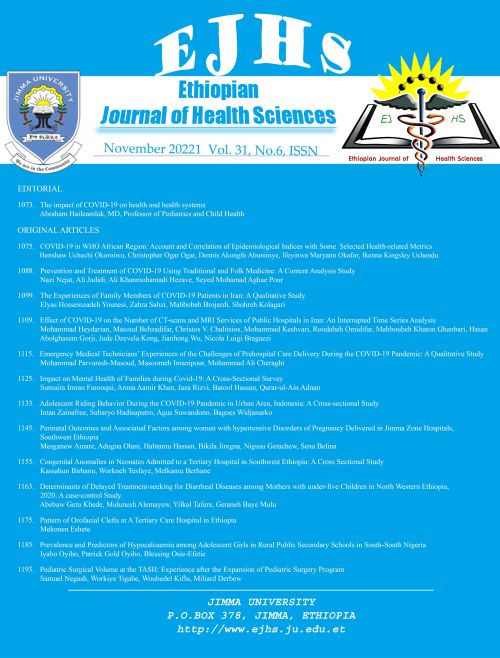Main Article Content
Antibiotic Resistance Profile of Common Bacteria Isolated from Blood Stream, Lower Respiratory Tract and Urinary Infections in Intensive Care Unit in Saudi Arabia: A Retrospective Study
Abstract
BACKGROUND፡ The rate of infections in the intensive care units (ICUs) is rising, mainly because of the increasing use of invasive procedures and specialized devices. This study aimed to identify the antibiotic resistance profile of common bacteria isolated from lower respiratory tract infections (LRTIs), bloodstream infections (BSIs), and urinary infections (UTIs) in ICUs in Saudi Arabia.
METHODS: In the current retrospective study, the isolates and antibiotic resistance were collected from the Electronic Medical Record (EMR) for respiratory, blood, and urine samples. The study sample compromised 96 patients admitted to the ICU at least for 48 hours and have a central venous catheter (CVC)
between November 1, 2020, and January 31, 2021.
RESULTS: 66 (68.8%) of the study sample were males, and 30 (31.2%) were females. LRTIs were the most common isolates (51 samples), followed by BSIs (28 samples) and UTIs (17 samples). The isolated pathogens in this study were Klebsiella pneumoniae (K. pneumoniae) (59.4%), Coagulase-negative staphylococci (CoNS) (11.5%), Escherichia coli (E. coli) (8.4%), Acinetobacter baumannii (A. baumannii) (7.3%), and Staphylococcus aureus (S. aureus) (6.2%). BSI were frequently caused by CoNS (35.7%) and K. pneumoniae (35.7%), while Methicillin-resistant Staphylococcus aureus (MRSA) represented 10.7% of BSI. Vancomycin, Synercid, and Teicoplanin were the commonly used antibiotics and showed 100% sensitivity among S. aureus, including MRSA, while almost 100% resistance was observed for penicillin and oxacillin against the same organisms. The maximum resistance was observed with aztreonam (96.4%), ampicillin (87.3%), followed by co-amoxiclav (83.9%), cotrimoxazole (79.5%) and cephalosporin group antibiotics.
CONCLUSIONS: Strict adherence to infection prevention practices and wise use of antibiotics are recommended to slow the spread of antimicrobial resistance (AMR).






